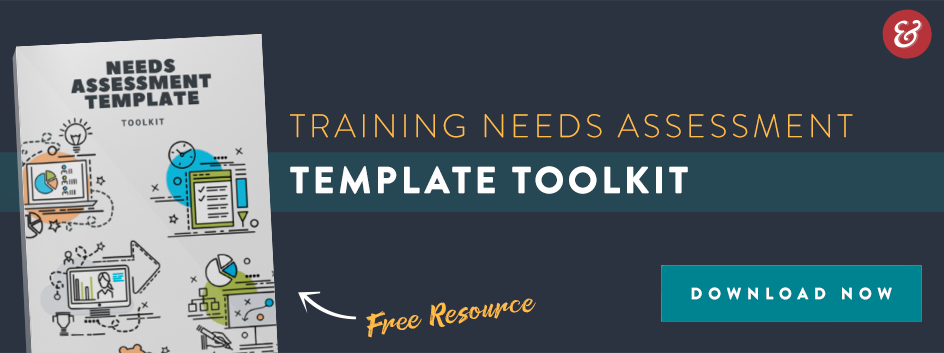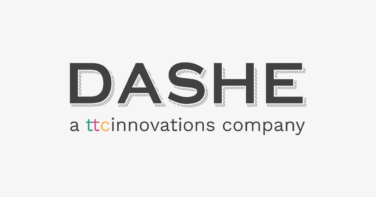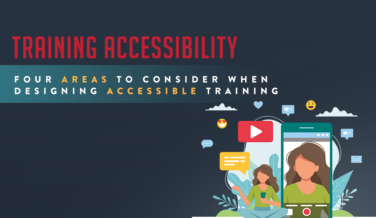Learning in the Flow of Work: Leveraging L&D to Create a Continuous Learning Environment
One of the most common reasons for underdevelopment of employees is that learners simply “don’t have enough time.” Workers and management alike struggle to justify time spent on so-called nonessential business tasks. In a fast-paced and ever-changing landscape, many companies feel as though they do not have the resources necessary to invest in learning and development. Contrary to this popular belief, L&D programs don’t have to be a burden on employees. In fact, with the recent developments in digital training technology and strategy, professional skill development can take place in a variety of different environments and with flexible levels of time commitment. The novel L&D strategy known as ‘learning in the flow of work’ can create an organizational environment that fosters employee development with little commitment to large chunks of time, money, and resources. If your organization is struggling to find ways to fit development into everyday operations, this strategy may be the perfect solution.
Learning in the flow of work focuses on integrating learning into everyday tasks and operations, as opposed to the traditional model of allocating hours, sometimes days, to large-scale development programs. Before we look at learning in the flow of work, let’s quickly go over why traditional learning programs are becoming a thing of the past, and for good reason.
First, obsolescent solutions fail because most employees aren’t too pleased when they are required to spend large chunks of time taking mandatory training. This can lead to issues with employee engagement and satisfaction. Second, and perhaps most important, one-and-done learning solutions typically aren’t very effective. People learn best when they are able to put new knowledge into practice. Integrating learning into the flow of work is the first step in creating a learning culture in your business that encourages development and engagement. Finally, traditional learning solutions aren’t always the right fit for low budgets, and they can take weeks, months, or even a fiscal quarter to roll out.
On the other hand, learning in the flow of work is becoming a popular solution for employee development. There are a few different strategies your organization can use to leverage the effectiveness of learning in the flow of work. First, and perhaps the most well-known, is microlearning. A microlearning approach is built on creating bite-sized, accessible learning solutions. Microlearning can take the form of short videos, interactive modules, and a variety of other standard L&D modes. Keep in mind, the most important aspect of an effective microlearning approach is agility. A successful microlearning program will be accessible and on-demand, allowing employees to choose to learn when they have time.

Another common form of learning in the flow of work is the use of performance support tools. While they are typically used to accompany L&D programs, performance support materials can also be used as a standalone solution. Here’s how they work:
Let’s say employees are struggling to navigate a new software your organization has implemented, and you want to create a learning program, but many employees simply do not have the time to take hours away from their work. Creating a central database with resources they can access on demand is a great way to encourage learning as a part of everyday work, but also allow employees to decide when, if, and how they learn. If you want to provide the ultimate performance support resource for employees, you can also dedicate an employee as a professional resource that others can go to when they need assistance.
When it comes to creating an environment in which employees enjoy learning, there are a few key points to keep in mind. The list below focuses on some of the lenses from which you can view the intersection of employee satisfaction and development
- Bring the training to your learners. One of the cornerstones of learning in the flow of work is creating a development program that doesn’t feel like a chore. As mentioned above, you will get maximum engagement and thus performance if you bring training to your employees.
- Communicate training purpose. We’ve spoken about this before, but it is crucial that you provide employees with insight into why they are participating in particular learning and development programs. A critical piece of creating a strong learning culture, clearly communicating training program purpose can help you get better buy in from employees, a critical piece in the success of L&D.
- Develop a learning support system. While performance support tools are proven to be effective in their own right, creating a system in which documents, media, and people can interact and grow is a vital piece of learning in the flow of work.
- Focus on broad goals. Often, learning and development programs fail because they are too focused on specific learning outcomes and fail to recognize broader organizational impacts and culture. Keep in mind that each learning program you implement has an impact on your employees’ willingness to participate in the next.
As with any training initiative, it is important to remember that, as odd as it may sound, you are responsible for ensuring your employees get the most out of the training programs you implement. Even the most ambitious and engaged employees need reasons to commit time and effort to professional development opportunities, so keep the tips above in mind when building your next learning program.
While your organization continues to face the challenges of a shifting learning and development landscape, it is important that you stay agile and adaptive. Bringing learning into the flow of work is one of many strategies that can be used to combat dips in engagement and performance, and is a strategy that can leverage L&D formats that are scalable and cost-efficient.
Continue reading

Dashe joins ttcInnovations
Learn More
Embracing the Future: Early Adopters of Generative AI for Learning
Learn More
Four Areas To Consider When Designing Accessible Training
Learn MoreCommitted to
finding solutions
